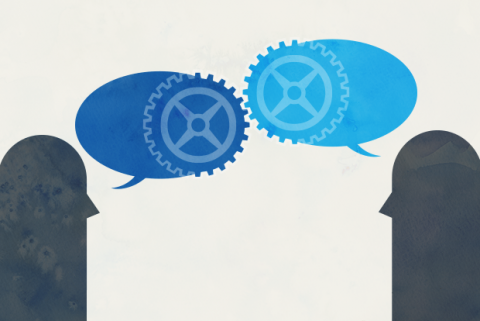Data is essential to any modern company, but software applications are what draw the business value from that data. Both are necessary for the company to succeed, and wonderful things can happen when they join forces. That's the message imparted by Krishna Venkatraman, SVP of analytics, and Pamela Rice, SVP of technology, for OnDeck, an online-based business loan maker. In part one of a two-part interview, they explain how, working together, they help OnDeck make better lending decisions.

The Enterprisers Project (TEP): Traditionally, lenders gather information on their applicants and use that data to decide whether or not to lend and on what terms. Some institutions also allow loan officers to also follow their own judgment and grant loans to borrowers who seem more creditworthy than the data alone indicates. What technology are you using, and how does it help you make better decisions than in this traditional system?
 Venkatraman: Lots of data points inform credit worthiness, and these signals are usually embedded in a variety of different forms and formats. For instance, signals may be part of a PDF bank statement, a set of credit card transactions transmitted digitally, or a feed from a credit bureau in a JSON string. Technology helps us to aggregate all these different signals at scale and across multiple formats, while algorithms, appropriately tuned, are incredibly powerful at extracting strong predictive insights from these weak signals.
Venkatraman: Lots of data points inform credit worthiness, and these signals are usually embedded in a variety of different forms and formats. For instance, signals may be part of a PDF bank statement, a set of credit card transactions transmitted digitally, or a feed from a credit bureau in a JSON string. Technology helps us to aggregate all these different signals at scale and across multiple formats, while algorithms, appropriately tuned, are incredibly powerful at extracting strong predictive insights from these weak signals.
When you look at the alternative, which is allowing loan officers to follow their own judgment, you must consider that in contrast, it’s hard for humans to assimilate and integrate more than four or five facts at a time. We have our own internal heuristics that shape our judgment, and there is no guarantee my judgment is the same as yours. Applicants, unfortunately, bear the brunt of our human foibles.
Machines, on the other hand, don’t have bad days and good days – lucky for them! Technology is consistent and helps level the playing field for the diverse set of customers we serve. So the tradeoff is clear: Rely on expensive human experts to evaluate every application using only a limited set of data, or let technology and data increase both the scale and accuracy of the decisions made.
TEP: When you put it that way, it becomes an easy decision. But how do you handle the nuances when a business is more – or less – creditworthy than the usual data would show?
Venkatraman: There is always a little bit of magic involved in determining what matters in the data. If you have 5,000 different attributes about a business, which of those in combination are informative? Machine learning models can be trained to be very efficient and accurate, even when there are hundreds or thousands of signals to parse. They can also handle missing data and errors gracefully without materially affecting accuracy.
We use a wide range of technology tools to ensure that OnDeck’s analytics keep up with modern advancements and meet customer demands. Specifically, a combination of distributed systems for data processing and machine learning – Hadoop, Spark, NOSQL stores and the emerging ecosystem of machine learning tools – allow us to handle large streams of data in parallel. Our company developed custom algorithms to match data from different sources to a single business, allowing us to predict potential future outcomes. And of course, since technology is all about speed and access, we design for a number of usage patterns in order to retrieve and compute our records in as close to real time as possible.
 Rice: The interesting thing about credit decisions is that there is not one perspective. There are a large number of things to consider that, in aggregate, create a credit and risk profile for the borrower. From a credit perspective: What are the past and current indicators of income and income potential, past borrowing and past payback? From a risk perspective: What is the probability to pay or the debt-burden ratio? And from a fraud perspective: What is the likelihood that borrowers are who they say they are? What is the chance that this is an account takeover or a fraud ring?
Rice: The interesting thing about credit decisions is that there is not one perspective. There are a large number of things to consider that, in aggregate, create a credit and risk profile for the borrower. From a credit perspective: What are the past and current indicators of income and income potential, past borrowing and past payback? From a risk perspective: What is the probability to pay or the debt-burden ratio? And from a fraud perspective: What is the likelihood that borrowers are who they say they are? What is the chance that this is an account takeover or a fraud ring?
With traditional lenders, often separate departments are looking at each of these in isolation, punching in numbers by hand, and creating decisions based on aggregates of data. Our technology allows us to combine all of this information, run analysis across all of these vectors and correlate information across the decision points. Therefore, we build what we are really good at: Finding ways to create a personal interaction with customers, making it easy and safe for them to give us information, and then coming to a credit decision that will be the best offer for customers and what they need.
TEP: What kinds of technologies power these decisions?
Rice: We’ve built building blocks of capabilities on top of open source technology that enables us to build, test, deploy, and monitor quickly. We’ve found that there is not one single technology tool with every capability that we need to serve our customers, but instead we need a host of tools that share information across all decision points. This combination allows us to ensure we not only have one opinion of the customer, but that as a company, we are speaking in a singular external voice.
We have over 40 apps that process a customer’s application, performing all the functions a mainstream institution would do with several departments. We do this in real time, and the magic is that we store and share the information and the intelligence across these apps. We feel we have a strategic capability in the way we architected our systems to share intelligence, what we’ve told the customer and the decisions we’ve made along the way. We are, therefore, able to speak with one voice to customers across online, customer service, and sales experiences and better predict what customers may need when they reach out again in the future.




